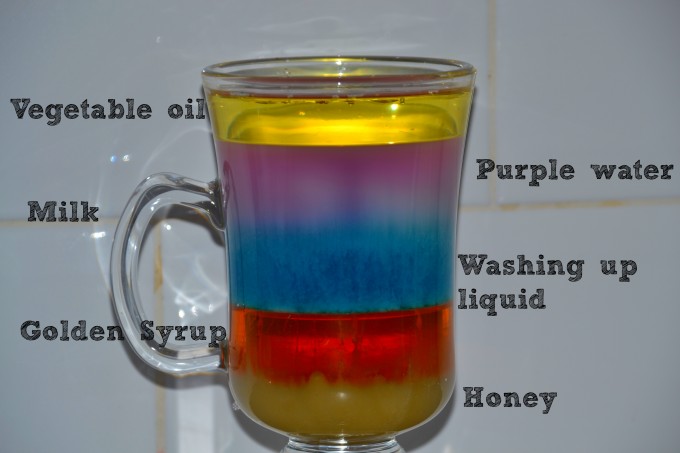Liquids of all kinds have different densities try mix a few liquids together in a jug and see what floats and what sinks to the bottom those at the bottom are denser

Liquids of Different Densities: Exploring Density by Mixing Liquids

As we interact with liquids every day, it’s fascinating to understand that these substances possess unique properties, including density. Density refers to the measure of how closely packed the particles in a substance are. It determines whether a liquid will sink to the bottom or float on top of another liquid. By conducting a simple experiment, we can observe these differences firsthand.
Mixing Liquids: A Fun and Educational Experiment
Grab a few different liquids you have in your kitchen or pantry, such as water, oil, and syrup, and a clear jug or container. Adding food coloring to the liquids can make the experiment even more visually appealing.

Start by pouring the liquids into the jug, one by one, observing the behavior of each liquid as you pour it in. You’ll notice that certain liquids will separate into distinct layers based on their densities. The liquid with the highest density will sink to the bottom, while the one with the lowest density will float on top. Additionally, liquids with similar densities may mix together, forming intermediate layers.
Identifying Dense and Less Dense Liquids
When performing this experiment, you may find that water, which has a density of around 1 gram per milliliter, usually sinks to the bottom. On top of the water, you might notice oil floating due to its lower density, typically around 0.92 grams per milliliter. This contrast perfectly exemplifies the concept of density and its impact on the behavior of liquids.
Various factors determine the density of a liquid, including its composition and temperature. For example, syrup is denser than water due to the high sugar content, while oil is less dense because its particles are not as closely packed. It’s incredible how nature works, enabling different liquids to coexist while retaining their distinct properties.
Why Does Density Matter?
Understanding the density of liquids and how they interact with one another is not only fascinating but also has significant applications in various fields. In industries like oil and gas exploration, density is crucial for identifying and separating different fluids found underground. Density also plays a central role in oceanography, helping to determine the salinity and temperature of seawater, influencing marine life and climate patterns.
By grasping the concept of density through simple experiments like mixing liquids, we can pave the way for a deeper understanding of the world around us. Whether it is observing the behavior of liquids in a glass or exploring the broader implications of density in different contexts, scientific curiosity is sure to be sparked.
Give this experiment a try with your favorite liquids and see which ones sink or float! It’s an exciting and educational activity that will allow you to marvel at the wonders of nature and the concept of density.
Source: Science Photo Library
Tags
Share
Related Posts
Quick Links
Legal Stuff

